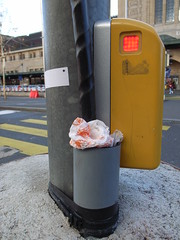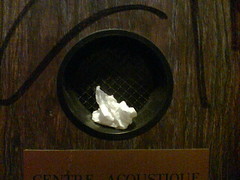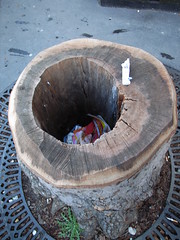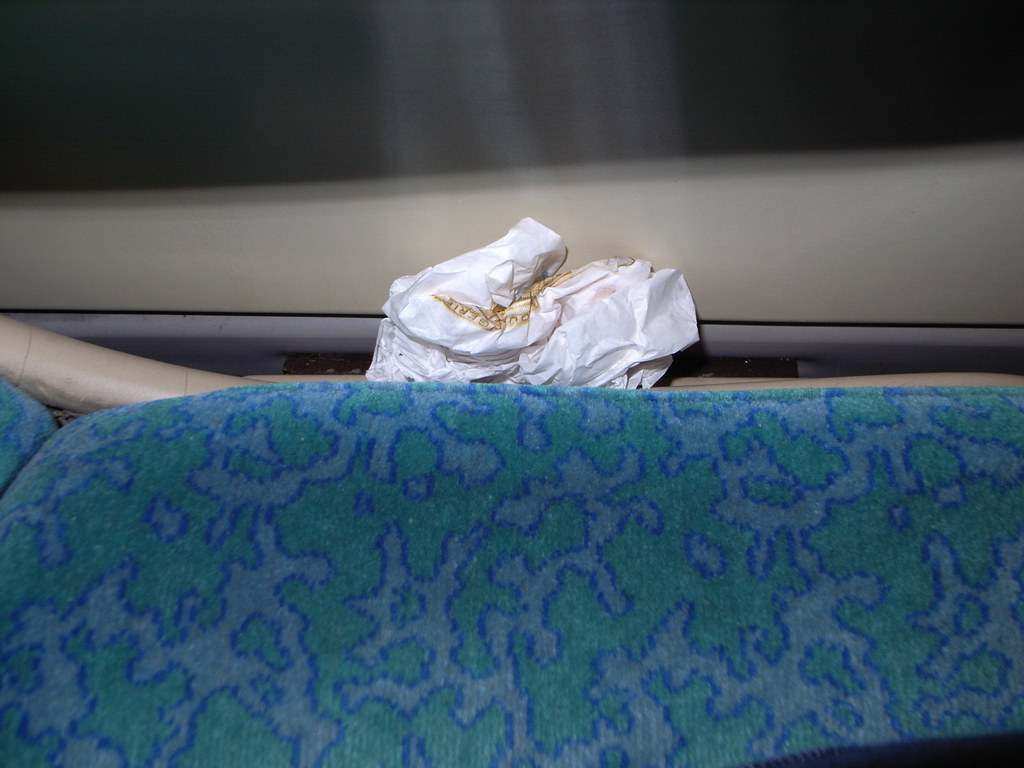According to the wikipedia: a sinkhole is:
" a natural depression or hole in the surface topography caused by the removal of soil or bedrock, often both, by water. (...) Mechanisms of formation may include the gradual removal of slightly soluble bedrock (such as limestone) by percolating water, the collapse of a cave roof, or a lowering of the water table. (...) Sinkholes have been used for centuries as disposal sites for various forms of waste. A consequence of this is the pollution of groundwater resources, with serious health implications in such areas."
Now, let's look at this picture I took in Geneva the other day:
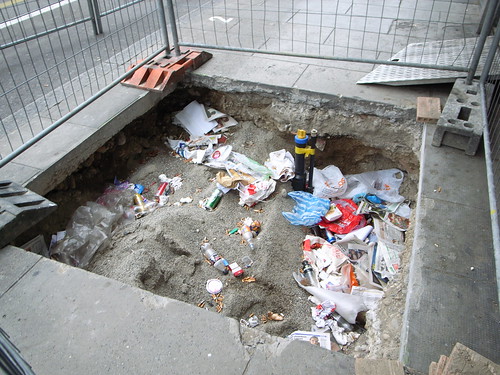
It's of course not caused by a natural process (but rather by the constant trend lately around my block to dig holes and changes underground tubes/wiring) but it strictly follows an interesting urban rule: "when there's a hole, it's gonna be filled with junk". Holes really have good affordances.
Why do I blog this? interested by people's practices in space/urban environment, I am often amazed by how people trash stuff. I termed this "interstitial practices" because it's really about filling gaps, using whatever holes or interstices to drop artifacts. And it occurred to me that there is a lot of creativity here: people like to trash stuff in certain ways: either to hide the junk or to make it as small as possible (compressing it into a small pipe as seen below):
Back to my/your interest in the future, user experience or tech foresight, how come this is pertinent?
